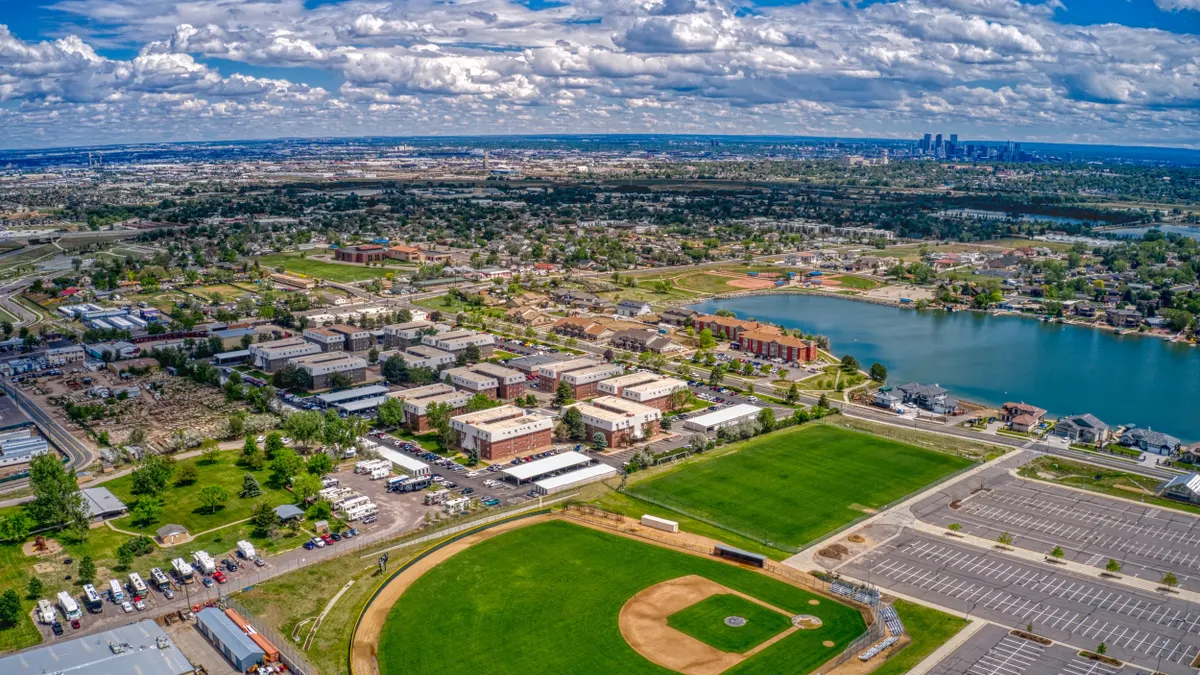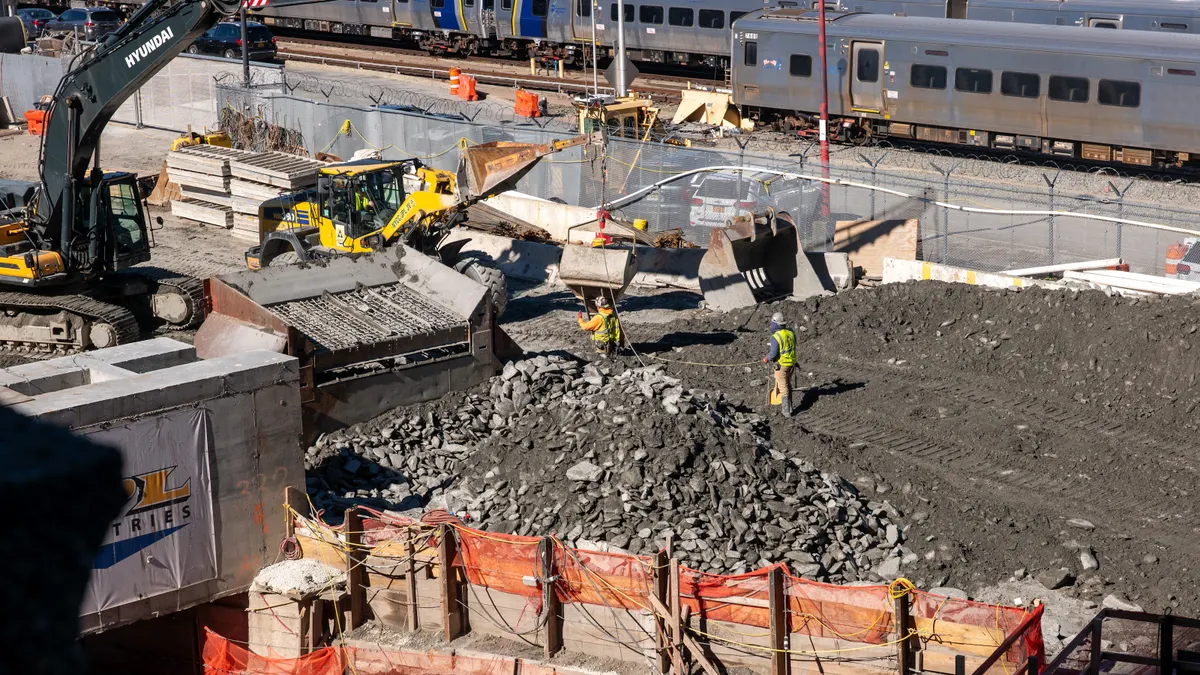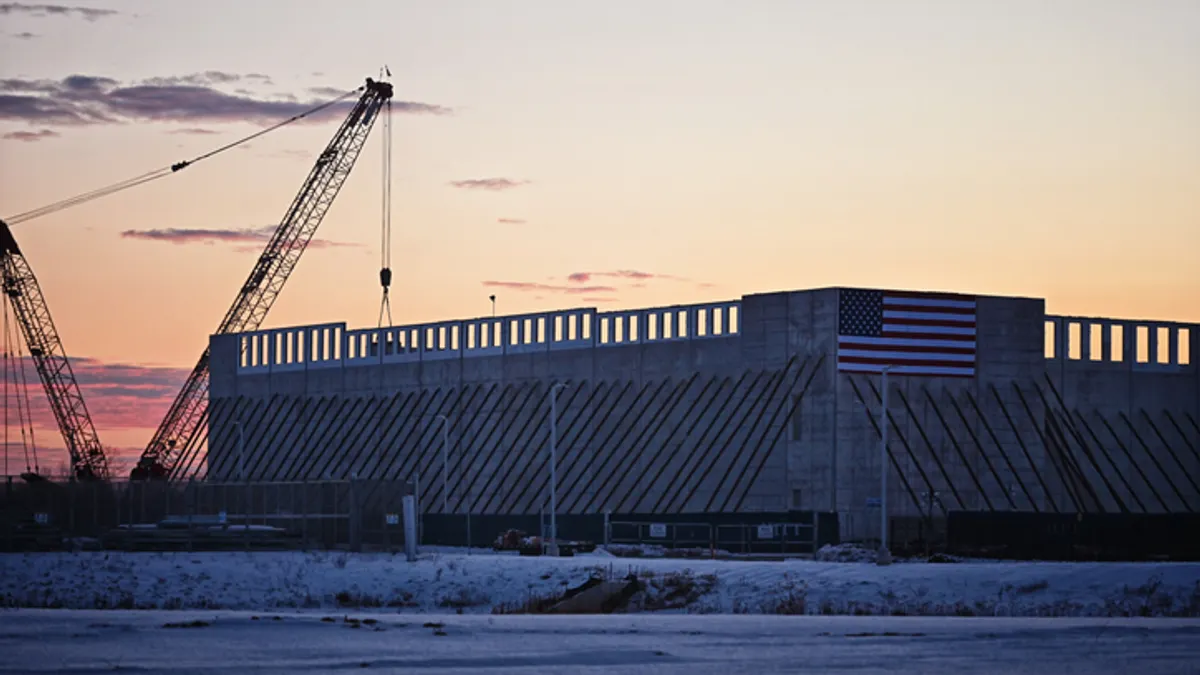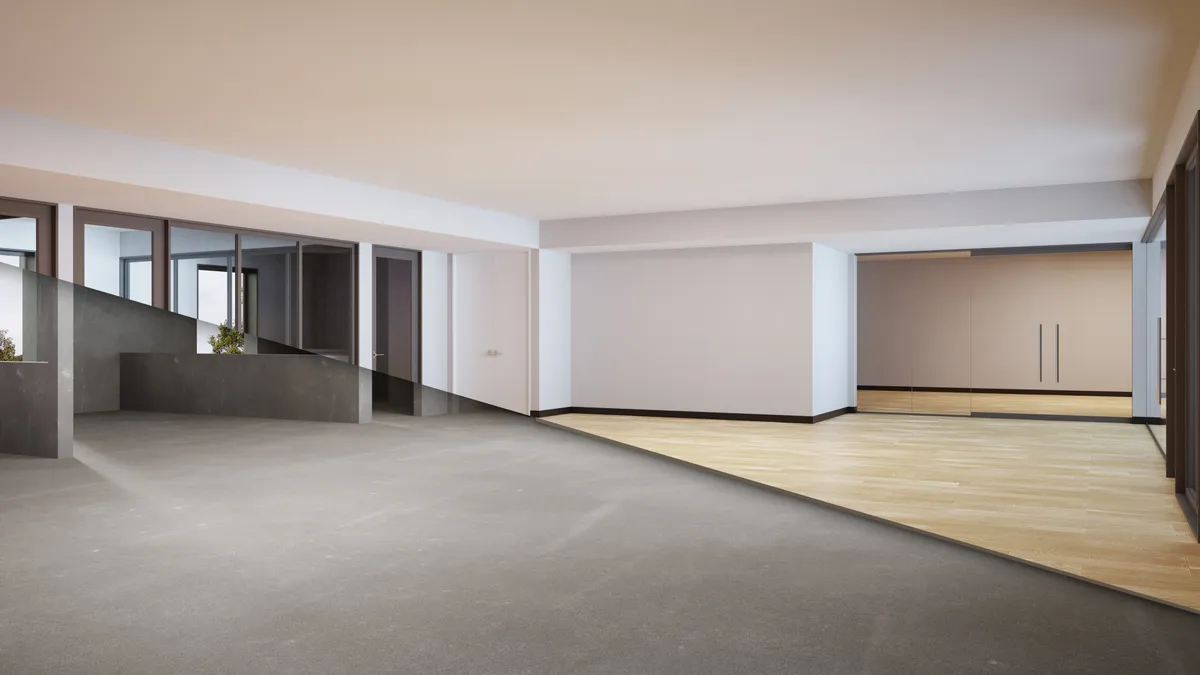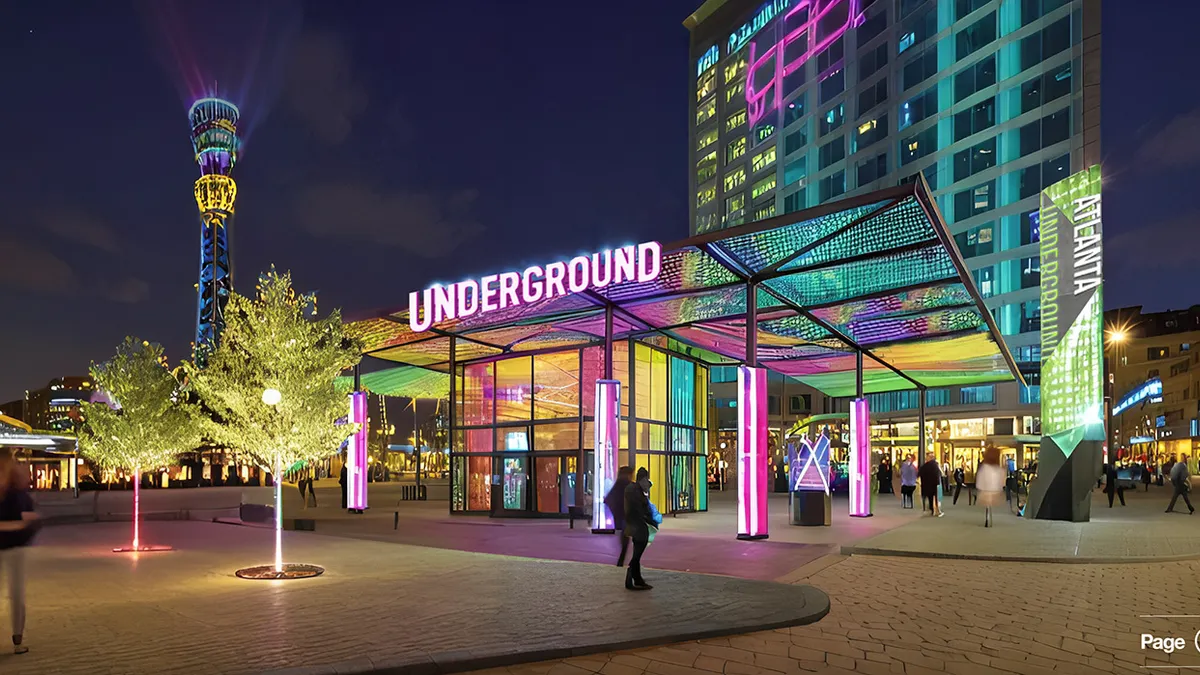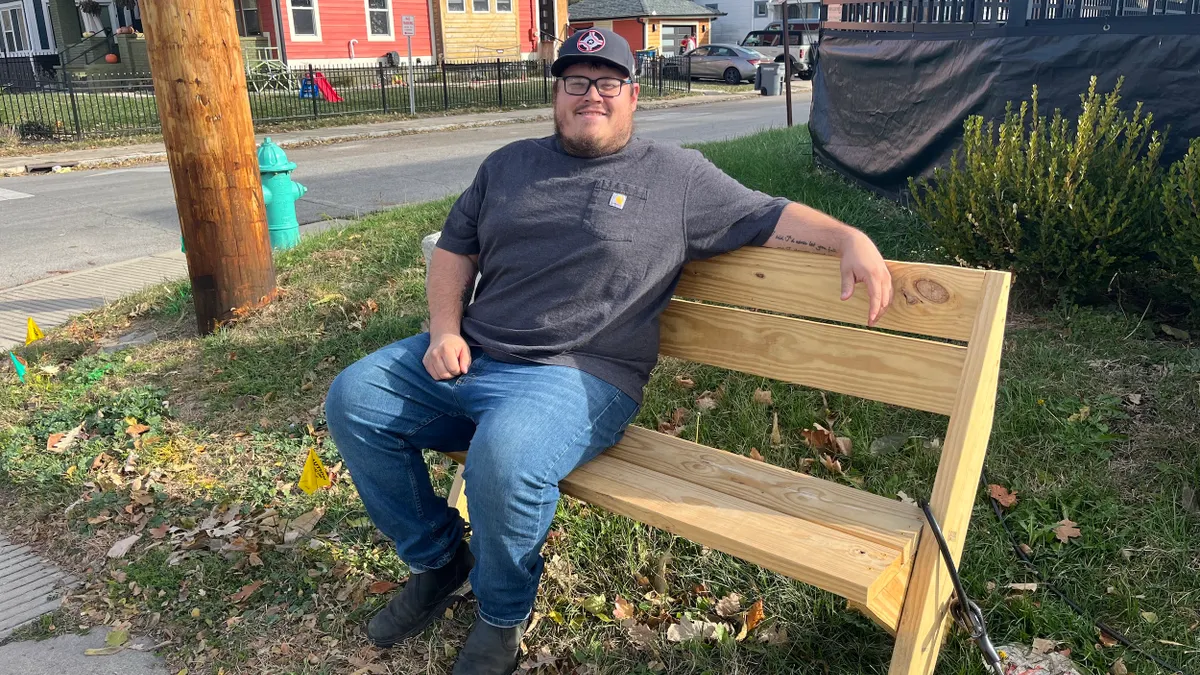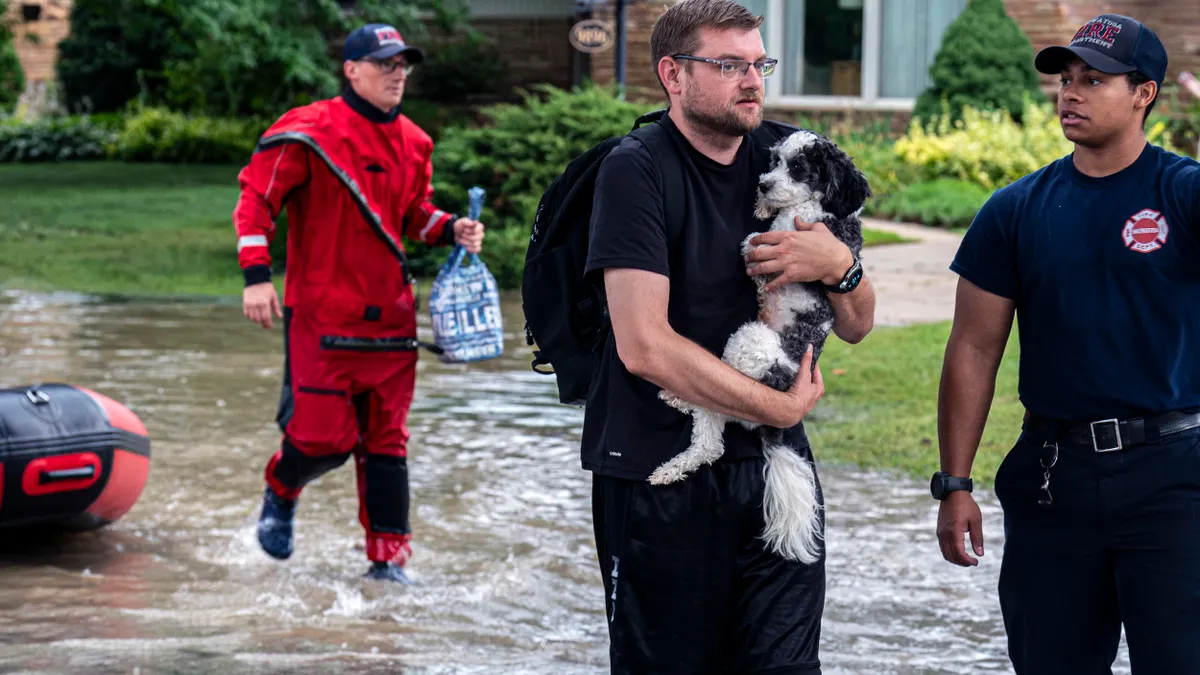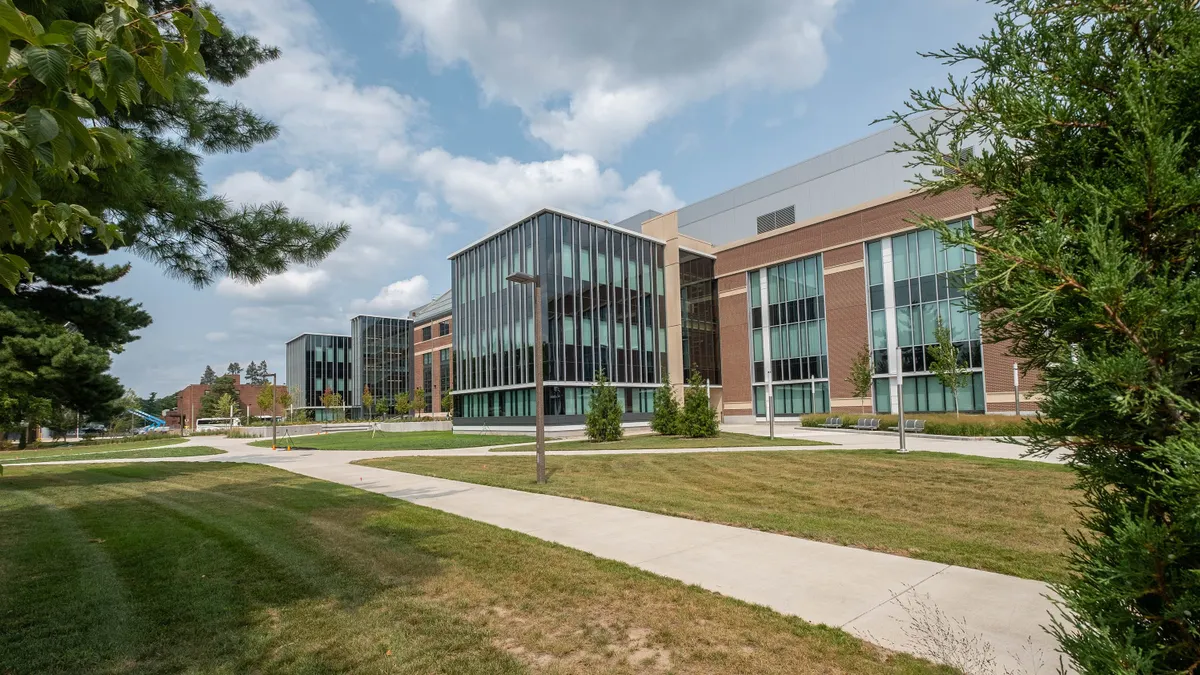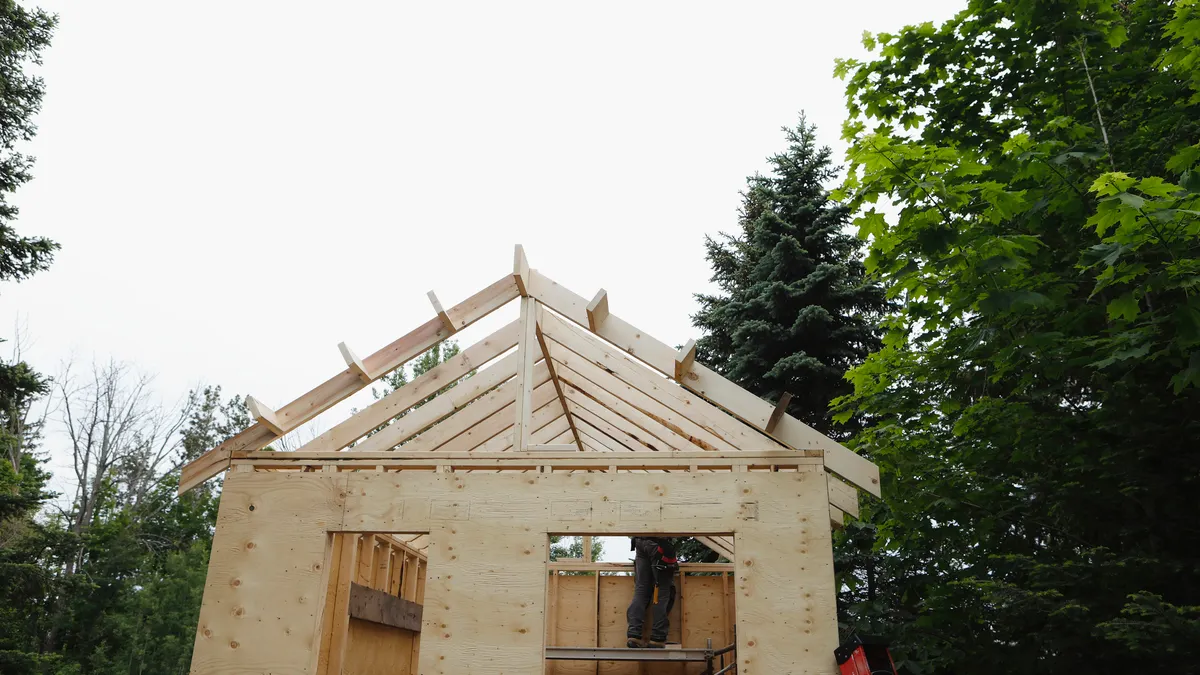Editor's note: This article was originally published in American City & County, which has merged with Smart Cities Dive to bring you expanded coverage of city innovation and local government. For the latest in smart city news, explore Smart Cities Dive or sign up for our newsletter.
The mental health crisis in the United States has reached critical levels, with an increasing number of mentally ill individuals caught in the cycle of incarceration because of inadequate care options. New mental health care facilities and treatment models are needed to divert these individuals from overburdened emergency rooms and jails and get them the help they need to recover.
In Douglas County, Kansas, the Treatment and Recovery Center (TRC) offers an innovative approach to mental health treatment via a thoughtfully designed facility that prioritizes compassion, collaboration and a continuum of care. Prioritizing integrated design and operational strategies in civic projects like the TRC is a powerful way for city and county governments across the U.S. to transform mental health services, reduce incarceration rates and recidivism, and improve public safety and community well-being. To be successful, creating this kind of facility requires careful re-examination of design philosophies, operational frameworks and collaborative partnerships.
Challenges of creating crisis treatment and recovery centers
City and county governments seeking to design and build a crisis treatment and recovery center like the TRC must navigate a range of challenges. The first of these is the need for multiple partnerships across different sectors. The medical component of such a facility is complex, requiring coordination among healthcare providers, law enforcement and community advocates.
Funding for these facilities is another hurdle, consisting of billing, insurance and financial sustainability concerns. In Kansas, for example, the state's licensing system limits the types of facilities that can be built. Crisis treatment and recovery centers, such as the TRC, are restricted to a maximum of 16 operational units, while larger facilities are categorized as psychiatric hospitals. This regulatory challenge impacts both design and operational strategies, influencing how the facility will function and the type of care it can provide.
In addition to regulatory and financial challenges, these facilities face competition for resources. Kansas, like many other states, has a shortage of psychiatric hospital beds, leading to long waiting lists for patients in need of care. The TRC, therefore, plays a crucial role in providing a continuum of care for individuals who may otherwise end up incarcerated or in emergency rooms. However, even crisis centers like the TRC can face limitations. For example, another crisis center in Kansas City, Mo., a retrofitted building called the Heartland, lacks the capacity for long-term care. As a result, patients may cycle in and out of the system without receiving comprehensive treatment plans, potentially exacerbating the underlying issues.
Uniting diverse stakeholders and prioritizing community input
One of the most significant challenges when developing the TRC was aligning the diverse interests of various stakeholders, including hospital employees, county officials, facility managers and law enforcement. Each group had different priorities and perspectives, making it difficult to reach consensus on key issues, including funding, facility design and operational strategies.
To overcome this challenge, the project team initiated multiple meetings with stakeholders to identify shared goals and priorities. Early brainstorming sessions helped unify the vision for the center, but it was crucial to revisit these goals at each stage of the project to accommodate changes.
To help make sure that the facility would meet the community's needs, the project team also hosted public meetings and engaged with local media to educate the public about the facility's goals and gather feedback. This transparency built trust and consensus, and it helped the community understand the value of a treatment and recovery center — reducing the inmate population by helping individuals experiencing mental health crises avoid incarceration.
Designing for flexibility and compassion
The TRC's design highlights the importance of thoughtful architecture in creating a therapeutic environment. The facility is calming and welcoming, reflecting its mission to provide compassionate care in a non-judgmental setting. The building includes two distinct entryways: one for patients who arrive via ambulance or from jail, and another for family members and friends visiting loved ones. The private entrance for patients coming from jails or emergency rooms protects their identities and maintains their dignity and privacy throughout their stay. The intake space and sobering area, available 24 hours a day, introduces a secure and supportive environment where patients can be assessed and begin treatment. This space is voluntary, meaning patients can leave at any time. The public entrance welcomes patients' family members and friends with an open, serene lobby that dispels negative associations with psychiatric hospitals or jails.
Treatment areas are home-like and calming, outfitted with natural finishes, wood doors, and large windows to create a sense of normalcy for patients who may have been incarcerated or otherwise isolated. Because recovering patients' social needs vary — some patients benefit from socializing with others, while others need solitude to recover — spaces for both communal interaction and private reflection are provided. Training conference rooms are provided for county officials, and an outdoor break area provides staff with a quiet, natural space to relax and recharge.
A separate outdoor area for patients is another key design feature. Designed to resemble a normal backyard, with grass-like turf and trees, this space is a calming environment where patients can participate in treatment programs. It was initially envisioned as an open space, but concerns arose that it might invite individuals who could detract from the therapeutic environment, so the design was revised to include unobtrusive white netting and fencing that provides security without feeling enclosed. Two entry points were added to allow patients to enter and exit the space freely, fostering a sense of autonomy and control.
Creating scalable solutions
More than just an example of compassionate design, the TRC provides a model for scaling crisis centers to meet the needs of other communities. The center's flexible design accommodates both voluntary and compulsory treatment options, with furniture that can be moved, rearranged, or removed as needed to support different treatment strategies. This adaptability supports the ability for the TRC to evolve over time to meet the changing needs of patients and the community.
The TRC serves as a critical part of a larger network of care, partnering with law enforcement, the judiciary, and other community organizations to provide comprehensive mental health services. The collaboration between these entities provides a higher quality of care for individuals experiencing mental health crises than they would receive in the penal system or emergency rooms.
Key insights for future projects
By combining compassionate care with strategic design and collaborative partnerships, the TRC has become a model for other cities and counties facing similar challenges. As the mental health crisis continues to grow, the TRC demonstrates that with the right infrastructure and community support, cities and counties can transform mental health care and build stronger, healthier communities.
For other communities considering similar mental health treatment centers, the TRC's success offers valuable insights. First, it is essential to define the mission of the facility early in the process. This creates a clarity of purpose that helps guide the design, funding, and operational strategies. Second, the facility's architectural design is critical in creating a calming environment that supports patients and staff. Natural light, open spaces and flexible layouts help reduce anxiety and improve treatment outcomes. Last, public engagement is crucial for success. By educating the community about the importance of mental health treatment and the role these facilities play in improving public safety and health, leaders can gain the support needed to bring these projects to life.
Commentary is a space for state and local government leaders to share best practices that provide value to their peers. Email Smart Cities Dive to submit a piece for consideration, and view past commentaries here.





